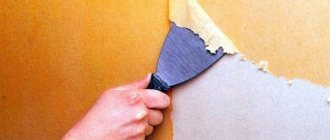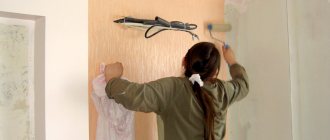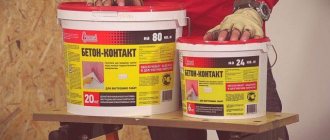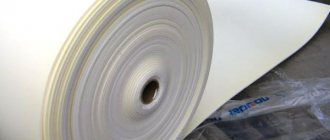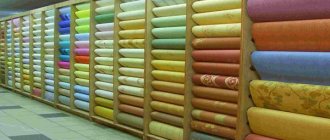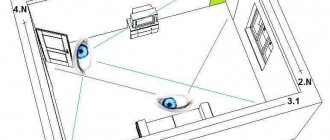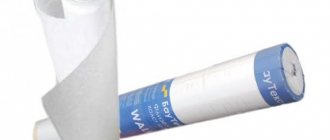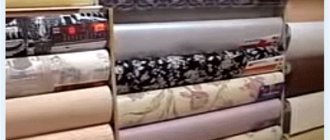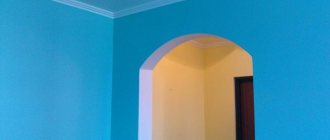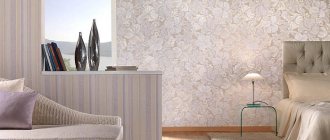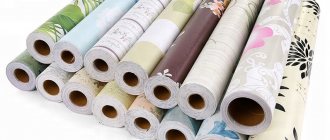When the question arises about changing the interior finish, there is often no desire to clean off the old coating, especially if a new layer of cladding will be applied on top of it. The question immediately arises: is it possible to use wallpaper if the previous wall covering is paint? Experts have different opinions, but there are successful modifications.
Determining the type of paint
Pros and cons of this solution
The extent to which the decision of covering walls with wallpaper over paint is a priority must be judged by the advantages and disadvantages of the method. Not all experts prefer this method, but it has a number of advantages:
- simplified preparatory process, in which there is no large amount of dust and dirt;
- the repair will take much less time, since one of the stages, preparation, will be less complex and lengthy;
- saving financial resources that can be spent on other priority goals;
- reduction in labor intensity, which allows you to do repairs yourself.
Despite this, the method of decorating walls with wallpaper over old paint is not without its drawbacks, which confuse many.
First of all, these are poor adhesive properties of the surface, which will negatively affect the interior design. The reasons for this deficiency depend on the coloring composition:
- if the wall is covered with a water-based composition, its surface, after wallpapering, begins to deform over time due to the properties of the coloring composition to absorb moisture;
- walls coated with oil paints lack vapor permeability, which can subsequently cause the formation of fungus and mold;
- The enamel coating of the walls has a glossy finish, which negatively affects the adhesion of the two surfaces.
Results
To summarize, it can be noted that professionals do not recommend gluing wallpaper over any paint, but there are no clear prohibitions against this. If such a decision is nevertheless made, it is necessary to take the work very seriously and not allow the slightest mistake.
But it should be noted that even if you do everything strictly according to the instructions, there is no 100% guarantee that you will be able to hang the wallpaper successfully, you will get an ideal surface and the wallpaper will serve you for a long period of time. As for the rest, it’s up to everyone to decide individually: is it worth the risk, or spend a little more effort and time and completely clean the surface of the old paint?
Recommended Posts
Wallpaper in a modern style, Provence, loft, modern
How to glue wide non-woven wallpaper
Gluing non-woven wallpaper
Design of combined wallpaper for the hall
DIY wallpapering in corners
How to choose wallpaper for a small room
Determining the type of paint
If your design idea allows for wallpaper to be glued to paint, you will need to do a little preliminary analysis.
Dismantling of the paintwork is not carried out; you need to choose a gentle inspection method.
It is enough to take a clean rag, moisten it heavily with water, wring it out and rub the wall with little force.
If the base is coated with a water-based or acrylic substance, foam will appear and traces of the dye layer will remain on the fabric. In this case, it is better to wash off the cladding completely and then apply wallpaper.
When such phenomena are not observed, water is easily repelled from the surface, which means that the coating is oil-based. Then you need to carefully check the workspace for integrity. Only if there are no cracked, peeling, or falling off areas can you use the old cladding.
In another situation, you will need to clean the wall of paint. Oily products are removed using a mechanical dry method and fly off in pieces.
Sanding the surface
Gluing the finishing layer is allowed only after the wall has been fully prepared with an oil coating. This is necessary to increase the level of adhesion of the oil material.
Such work will turn a smooth base into a surface with roughness. To do this you need to purchase sandpaper.
They pass it over the entire surface on which the canvases will be glued. After sanding the base, the wall is puttied with a mixture containing gypsum. This is done only in those areas where the paint has been removed.
Use a spatula to level the surface, then sand the wall with putty again and proceed to applying a primer.
Checking the degree of adhesion
It is also important to make sure that the existing finishing layer is firmly fixed to the wall.
To test the paint, you will need a small piece of masking tape. It is necessary to attach it to the base, pressing it with your palm, smoothly draw it along its length and sharply tear it off.
Checking the grip strength
The remaining paint particles indicate that this coating is not suitable for pasting, since the canvases will not stick to it and will soon fall off.
It is prohibited to carry out finishing work if there are traces of fungus or mold until the affected area is completely cleaned and treated with antiseptics. Then complete removal of the previous layer of paint is allowed.
How to prepare oil-painted walls
Painted surfaces cannot withstand heavy loads, so there is no need to buy heavy wallpaper, such as non-woven wallpaper.
The surface of enamel paint is dense, without pores, with a slight or glossy sheen. The first step to starting work is to roughen the enamel to increase the adhesion of the materials. It is possible to improve adhesion with sandpaper.
The result is a matte, rough layer.
Clean everything thoroughly, wash the walls, let them dry completely.
Primer of walls
The cleaned space is covered with a primer, using a brush in corners, joints, and hard-to-reach areas, and the main part is easier to treat with a paint roller.
When the first layer is completely dry, apply another one.
Old coating
Before starting preparatory activities, it is important to carefully inspect the walls. In some places, cracks and spots of loose putty appear on the coating. You cannot leave them, as the wallpaper will simply tear in these places and will look uneven.
In relation to the old coating, the following work must be carried out:
- remove all areas that may fall off (if a significant part of the paint has been removed, it is better to remove the entire layer);
- pull out nails, disconnect skirting boards;
- get rid of any protruding elements.
Get rid of old peeling paint and plaster using a metal spatula, knife or other convenient tool.
Technology of work execution
It is important to accurately determine whether the wallpaper can adhere to painted substrates before starting preparation. If it was decided to glue “as is”, it is important to use good quality materials for the work.
Glue over water-based or acrylic paint
Before gluing on the new cladding, the outdated coating is updated using a mixture of primer and solvent prepared in a 1 to 1 ratio.
The neutralization reaction of the working surface will begin, and at the same time the primer will penetrate deep enough into the structure, which will increase the level of adhesion.
Pasting over acrylic layer
With this type of finishing, preparation is important when deciding whether to glue wallpaper. With a responsible approach, you will get a durable coating.
When the first layer of solvent primer has dried, apply another layer. Pasting is carried out on dry walls.
To make the wallpaper stick better, it is recommended to mix wallpaper glue with PVA in proportions of 1 to 1. The resulting adhesive mixture is used to cover canvases and walls.
Glue on oil coating
If pasting is performed for a short-term purpose, the enamel is left. When you plan to leave the result for 10 years or more, the paint must be removed.
In the first case, the main surface is sanded with sandpaper to increase adhesion. It is important not to forget about removing dust and construction chips so that by the time the primer is applied, the base is clean and dry.
At the same time, minor defects in the walls are hidden, which also helps to better adhere the paper material.
Sticking on enamel
In the second situation, before pasting, the existing color is completely removed mechanically, and chemicals are used in difficult-to-remove areas. It is necessary to provide yourself with protective equipment for your eyes, respiratory tract, skin of your hands and feet.
During processing, a strong toxic odor is released, so ventilation of the room is required.
You cannot skip the primer application step, otherwise the fresh cladding will not stick well and will look worse on the walls.
However, it is not recommended to level it over the enamel or glue wallpaper. Why? Shown in detail in the following video:
Useful tips
It's quite common for people to put wallpaper on painted walls - it's a common practice. If the surface of the wall is painted, then it needs to be properly prepared - we talked about this in the previous paragraphs.
You should also listen to the recommendations:
- For wallpapering, you should choose expensive and high-quality glue (preferably from well-known manufacturers). It is important that the adhesive composition has high bonding properties, because a painted surface is not the best option for gluing canvases.
- You cannot glue wallpaper to a surface if it has bright colors. If the canvases are light, then the rough coating will be clearly visible through the layer of material, as a result of which the entire aesthetic effect will be lost.
- After gluing the canvases, it is recommended to avoid drafts and temperature changes in the room for 1-2 days.
Wallpaper selection
Among the variety of products, it is not possible to glue heavy rolls such as vinyl. You should choose only lightweight paper products, or models with a very small amount of non-woven fabric.
When the base has been cleaned to a rough finish or the remaining paint is very different in shade, a thin layer of putty is applied to avoid another color showing through.
Thin wallpaper will tightly fit the surface of the walls, making unevenness visible. The base will have to be completely leveled.
If you decide to use liquid wallpaper in the interior, you first need to paint the existing trim with white paint. Painting is necessary so that another color does not break through from below when the wallpaper solution is not completely filled.
What glue to use
The adhesive is chosen depending on the type of wallpaper. A universal adhesive mixture is produced separately, but it is not recommended to use it, as it may not have the qualities required in a particular situation.
A narrowly targeted composition is needed that will provide the required degree of adhesion and will not harm the facing material.
If you purchase self-adhesive wallpaper, you do not need to take additional glue - just gradually remove the protective film from behind and glue the canvas.
Necessary materials
Knowing how to stick wallpaper on painted walls, you need to acquire all the necessary building materials and accessories that may be needed during the preparation process. You will need the following materials and construction supplies:
primer; glue mixture; coarse sandpaper; putty knife; roller; various rags or soft mop; detergents (usually use dissolved liquid soap); scissors or stationery knife; centimeter; wallpaper.
All these available tools will be needed for high-quality pasting.
The video will help you prepare painted walls so that you can glue wallpaper:
Pasting walls
The general principle of the work remains the same, with the difference that the workspace already has one type of finish.
You need to buy material with a reserve so that it is enough for short sections, or in case of sloppy attempts.
Each sheet is cut individually, having previously taken measurements of the area to be covered. This will help you cut a piece of canvas to a suitable length.
The cut rolls are turned face down and begin to be glued one by one.
The wallpaper sheet must be spread with glue, without gaps, so that it sticks well. The procedure is repeated for the wall.
The movement starts from the window. Preliminary marking for the first section will help to make the pasting as even as possible.
Wallpapering
The sheet is placed under the ceiling and the top edge is pressed. Afterwards, gluing is carried out using a rubber roller or a plastic spatula, moving from the center to the sides at an angle like a herringbone pattern.
Exposed glue is immediately removed with a clean sponge or rag (it is important that the material does not release pigment). Immediately coat the corners or edges that have had time to dry with adhesive solution.
The next sheet is glued end to end.
